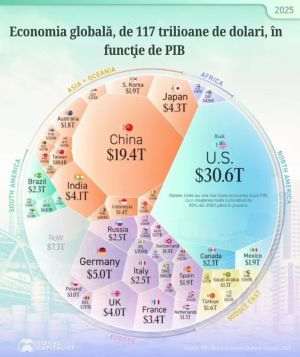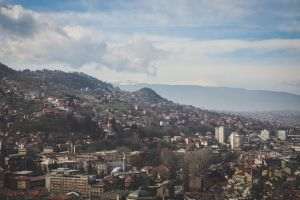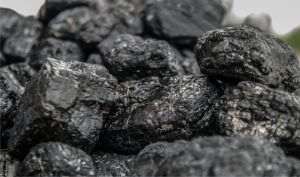Yesterday's announcement by Ukrainian prime-minister Arseni Iatseniuk concerning the accident of the Zaporizhia nuclear plant, gave Romania and the European community cold shivers, as they still remember the nuclear disaster of Chernobyl which occurred in 1986. At the time, the incident was covered up by officials for almost three weeks, and European and Ukrainian population was exposed to radiation.
"I know there has been an accident at the Zaporizhia plant", the Ukrainian prime-minister said, who yesterday asked the new minister of energy, Volodimir Demchishin, to report when the problem gets solved and what measures will be taken to restore the normal energy supply in Ukraine, according to Reuters.
According to the Ukrainian minister of Energy, Vladimir Demchishin, the accident occurred at Unit 3 of the plant and was caused by a short-circuit.
The Russian press reported that Demchishin said that the incident has nothing to do with the plant's reactor and that there are no radioactive leaks. "Every effort is being made to begin work on repairing the plant", the official said, quoted by newsru.com.
The reports previously issued by Ukrainian press agency Unian state that unit 3 of the Zaporizhia plant was shut down on November 28th, at 19:24 hours. The deactivation of the plant led to an electricity shortage in Ukraine's energy system, which led to partial blackouts in certain areas of Ukraine.
The International Atomic Energy Agency (AIEA) announced that it has no comment on the situation, according to Reuters. In line with the international conventions enacted after the Chernobyl accident of 1986 in Ukraine, the country is required to inform the AIEA about all the incidents in its nuclear installations that could affect other countries.
According to "Energo-atom" experts, the plant may resume operation tomorrow.
Interfax Ukraine reported that the problem occurred at block no. 3, - a 1000 megawatt reactor - and the resulting drop in energy output has worsened the energy shortage in the neighboring country. The Zaporizhia plant is the biggest in Europe, and is located approximately 700 kilometers from Romania.
The Minister of the Environment and of Climate changes, Attila Korodi, summoned the Ministry's Committee for emergency situations yesterday at 15:00, to review all the data concerning the accident which occurred at the nuclear plant of Ukraine, according to a communiqué.
The document states: "The plant is approximately 500 km away from Romania's territory and is one of the largest nuclear plants. On a zero to seven INES (International Nuclear Events Scale) rating, the event was rated 0 (non radioactive event). Scale 7 is similar to the events of Chernobyl and Fukushima. The ministry will continue to collect and review data concerning the issue and will maintain permanent contact with the institutions of the state that are qualified in such matters".
The National Weather Agency will continue to monitor, atmospheric movements in the area of interest, and the National Agency for Environment Protection continues to monitor the radioactivity levels of environmental factors, both automatically and manually, and will note any changes which may occur. Data supplied by the network is constantly made available to the public, on the EURDEP platform, according to the communiqué.
After the National Meteorology Agency (ANM) ran the numeric dispersion model, it was found that the trajectory of the possible radioactive cloud would remain north of Romania's borders in the next 48 hours. According to data by the National Environment Protection Agency (ANPM), derived from the monitoring data of the past few days, the values of the every environmental factors were within the normal range, the ministry stated.
Environment minister, Attila Korodi said: "As soon as the first report was published, the ministry sent letters requesting information about that event to the Ukrainian embassy in Romania, to the Romanian embassy in Ukraine, as well as to the Ukrainian Ministry of the Environment. Even though data indicates that we do not have problems, we will be monitoring the situation very carefully, to make sure that there are no reasons for concern".
He said that he has ordered an increase in the number of spectrometric analyses for the aerosol samples and atmospheric deposits and the sending of notices to territorial agencies in order to ensure a quick response should increases in the radioactivity of the environmental factors be found, as well as ensuring the hourly reporting of flow data from the automated system station, both to the habilitated domestic institutions, as well as to the European Commission, on the EURDEP platform.
Reuters also reported that the French institute for nuclear safety (IRSN) yesterday said that it did not detect any unusual radioactive activity in Ukraine and that the incident reported yesterday does not raise any safety issues for the population. "We have two sensors installed on the roof of the French embassy in Ukraine and we have been informed that there is no unusual radioactive activity", said Michel Chouha, the representative of the IRSN. "Had an accident occurred, we'd know".
Our sources in Ukraine say that apparently there is no serious issue and this is just a matter of inadequate communication.
At the end of August, Greenpeace publicly warned Ukraine that reactor number 6 of the Zaporizhia plant was vulnerable to armed attacks, amid the intense conflicts in the area. The organization asked for the nuclear plant to be protected against direct bombardment.
Lately, the Russian and the Ukrainian press did not report any armed conflicts in the area.
Half of Ukraine's energy is supplied by 15 nuclear plants. Lately, Ukraine is facing an energy deficit.
The nuclear accident of Chernobyl is considered the worst case to affect the industry. In 1986, a cloud of radioactive fallout headed towards the Western parts of Soviet Union, Europe and the Eastern parts of North America. Large areas of Ukraine, Belarus and Russia were heavily contaminated, and approximately 336,000 people were evacuated. Because of the cover-up of the incident, it is still difficult to this day to estimate the exact number of victims caused by the events of Chernobyl. The 2005 report of the Chernobyl Forum, led by the International Atomic Energy Agency (AIEA) and the World Health Organization (WHO), has attributed 56 direct deaths (47 workers and 9 children with thyroid cancer) and has estimated that more than 9,000 people of the approximately 6.6 million exposed could die of a form of cancer. The report quoted a number of 4,000 thyroid cancer cases among the children who were tested in 2002. Recent studies doubt this official report and claim that the number of victims exceeds one million.
























































